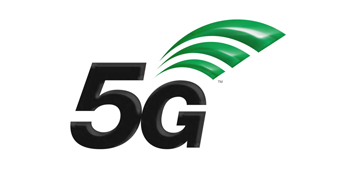Over-the-air (OTA) testing examines and validates the performance and reliability of wireless devices and their antennas and other components.
Measurements such as Total Radiated Power (TRP) and Total Isotropic Sensitivity (TIS), which are performed under the product’s operating conditions, validate its compliance with specified standards.
OTA testing gives wireless device manufacturers and distributors the assurance that their products not only meet performance and regulatory requirements but also are ready to be sold on the market.
cetecom advanced has the competence, capabilities and capacities,
to support the most demanding product launches in a connected world.
cetecom advanced is the leading provider of wireless test solutions around GSM, UMTS, LTE and now 5G. We are your reliable and trusted partner throughout the product lifecycle, validating quality and performance and helping you accelerate time to market. Our OTA test team works focused to deliver fast turnaround times and pinpoint results for the device under test (DUT).

We use state-of-the-art OTA test facilities in our laboratories. Our global capacity and flexibility allows us to serve you faster and minimize your testing time.
The capabilities of our OTA chambers in include:
In addition, our measurement chambers support OTA testing using head, hand and forearm dummies to accurately represent the way wireless devices are actually used. This type of testing provides hands-on analysis of over-the-air (OTA) performance and requirements from a product design perspective.
cetecom advanced is CTIA-authorized and an expert in the latest test plans of the largest US network operators.
Our engineers also support R&D services such as custom pre-testing and troubleshooting.
We are a preferred lab for the leading US carriers and in some cases the exclusive lab for OTA testing. We understand the requirements of each carrier and can certify your product to multiple carrier specifications simultaneously to speed your time to market.
Developing IoT-enabled devices can be challenging. cetecom advanced can connect you with the best designers, module manufacturers, antenna manufacturers and other companies that have experience with successful product launches.
Industrial and commercial routers and access points are becoming increasingly complex. Multiple technologies (Bluetooth, Wi-Fi, LTE/4G, 5G) in a single device can be challenging. Our extensive experience with these types of devices and the professional performance of our dedicated experts provide the assurance that your device will be tested efficiently and reliably.
Fleet telematics systems have evolved from providing simple vehicle location information to streams of telecommunications and informatics data (e.g., turn-by-turn navigation and vehicle diagnostics). In addition to these types of telematics systems, cetecom advanced performs telematics testing on infotainment systems (e.g., music streaming and Bluetooth connectivity including data security) from various Tier 1 automotive suppliers. Our engineers will guide you through the telematics testing process.
You can trust cetecom advanced as an experienced expert for testing and certification of all your state-of-the-art products.

LTE Carrier Aggregation enables operators to use multiple sub-6 GHz spectrum channels simultaneously to transmit data between base stations and a 5G mobile device.
Multiple spectrum parts, which may be in the same or different frequency bands, are allocated to a device to enable greater bandwidth and faster data speeds in challenging mobile conditions. These spectrum parts are called component carriers, and up to five component carriers can be combined to transmit an aggregated bandwidth of up to 100 MHz. Two aggregated component carriers are called 2CA, three component carriers are called 3CA, and so on.
cetecom advanced was one of the first laboratories in the world able to test the OTA performance of products with 5CA, the highest five-band combination.

OTA testing is a critical aspect of 5G device design and development. Beamforming, mmWave frequencies, and integrated transmitters are just a few of the 5G NR components that can be challenging to test. Not for cetecom advanced: in 2019, we tested one of the first devices with a 5G-compatible antenna and have since continued to build our expertise in 5G testing.
5G promises breakthrough increases in bandwidth, speed and throughput. Rigorous OTA testing is critical to ensure that 5G devices and systems deliver on this promise in everyday use. Our customers rely on us as an OTA test partner with the expertise and state-of-the-art facilities to address the specifics of 5G NR technology in the higher frequency bands and extended bandwidths in the millimeter wave (mmWave) range. At cetecom advanced you are at the right address.
The new performance requirements for 5G NR are driven by several applications in three main service types or use cases:
In addition, 5G NR has introduced two new test modes for the transition from 4G LTE to 5G:
In 2019, cetecom advanced started testing in NSA mode, where 5G NR runs on the LTE carrier using an anchor. In early 2020, we started testing in stand-alone mode, where the 5G NR signal is sent without an LTE anchor. In addition to stand-alone and non-stand-alone tests, we support higher order test combinations for E-UTRAN New Radio (EN-DC) defined by 3GPP. EN-DC simply means dual-connectivity, and U.S. carriers are increasingly beginning to require these test combinations.
Our OTA experts take these and other special features of 5G NR into account when testing your devices, systems and components, including:
Network coverage and capacity are key to an optimal 5G user experience. NR carrier aggregation technology aggregates spectrum in the low, medium and high frequency bands to better utilize network resources, increase capacity and improve the user experience. Similar to LTE carrier aggregation, there are higher order carrier aggregation combinations that can include multiple 5G carriers, potentially multiple LTE carriers, or a combination of both.
NR carrier aggregation helps mitigate impairments: This combines the mid/high band TDD with the low band FDD spectrum to provide a higher bandwidth connection to the mobile device while extending the coverage of the mid/high bands.